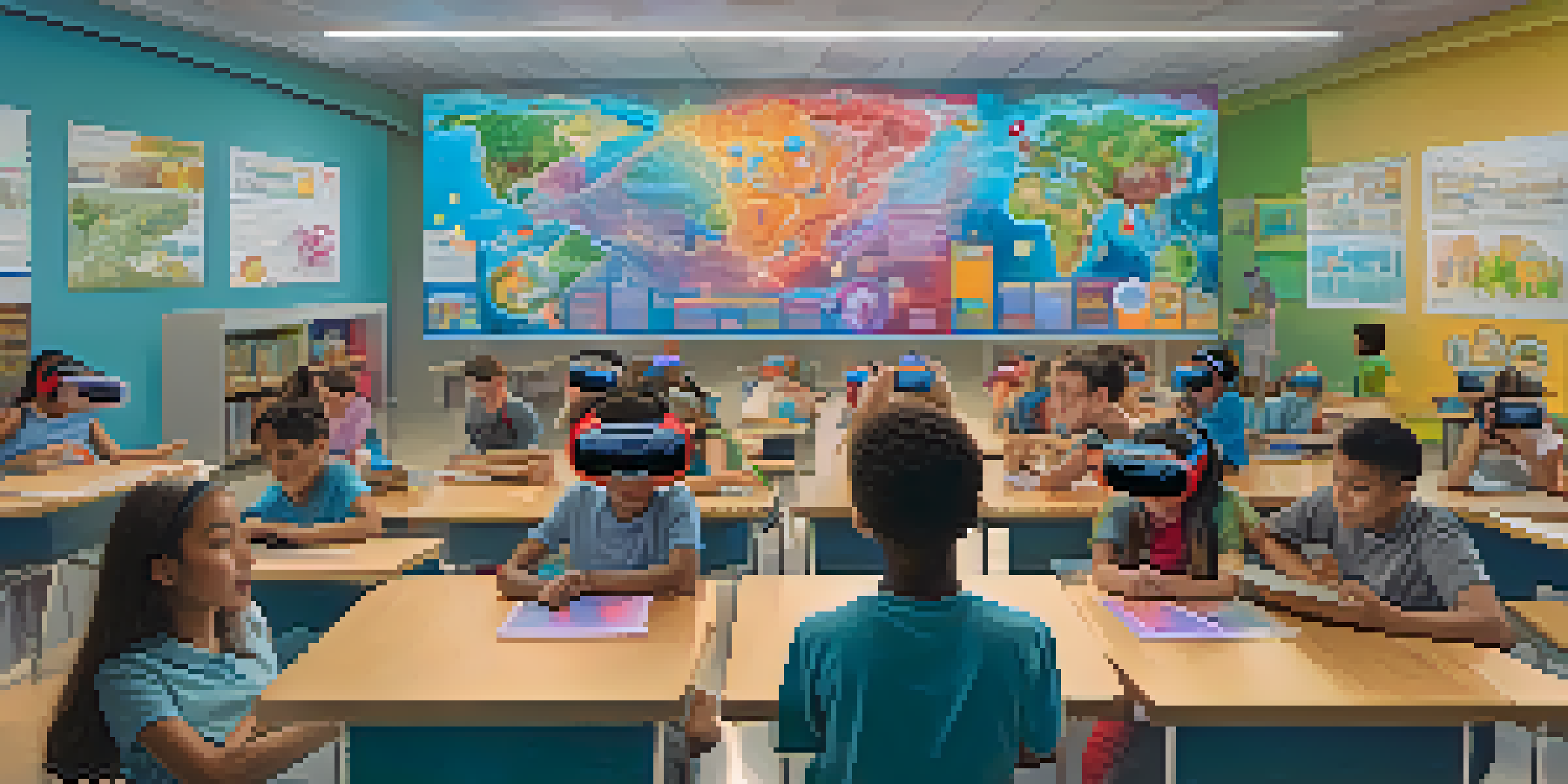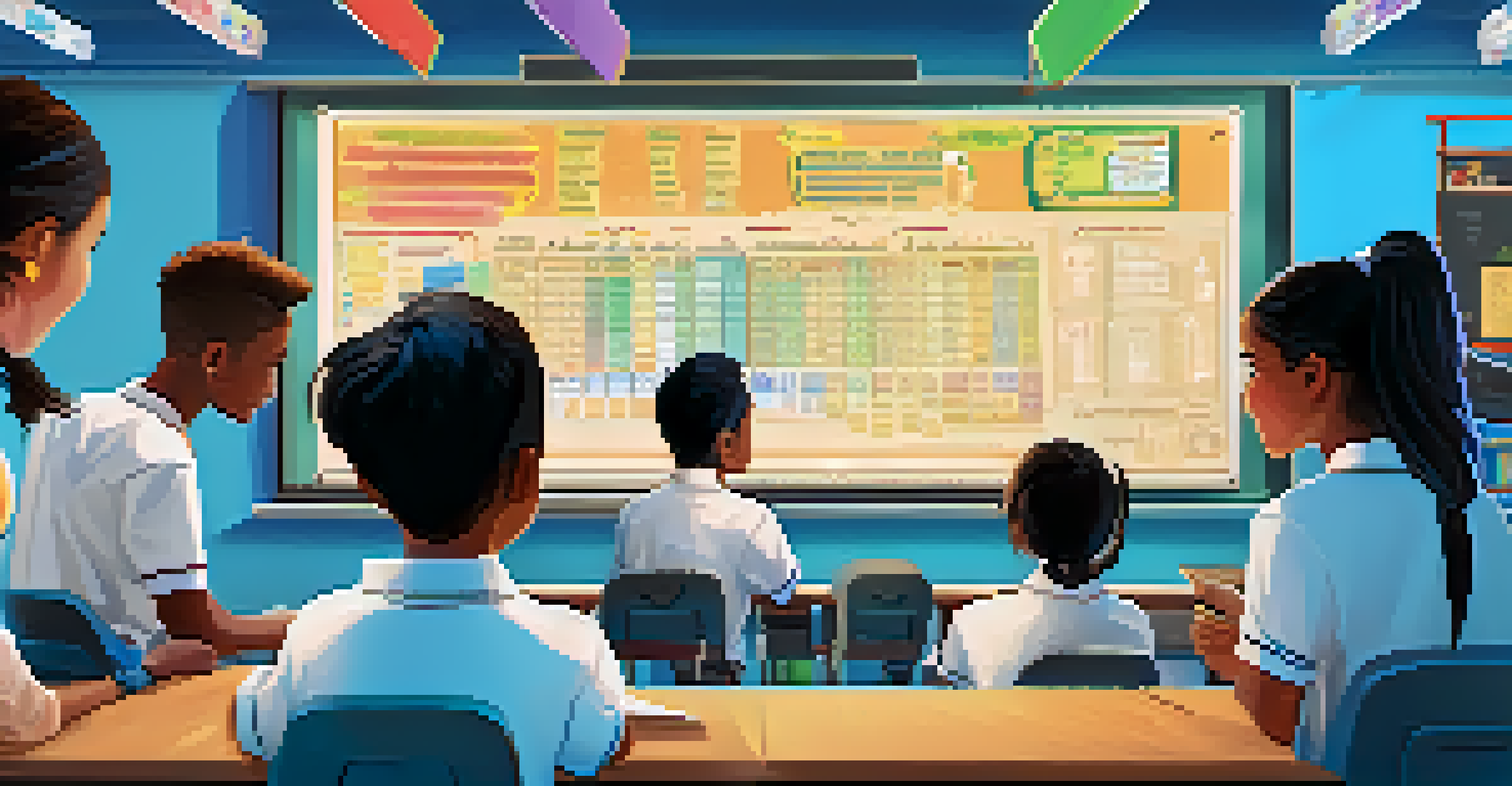Creating Immersive Learning Experiences with Technology

Understanding Immersive Learning and Its Importance
Immersive learning is an approach that fully engages learners, making them active participants in their education. This method goes beyond traditional teaching by utilizing technology to create realistic and interactive environments. For instance, virtual reality (VR) allows students to explore historical landmarks or scientific phenomena without leaving their classroom.
Learning is not the product of teaching. Learning is the product of the activity of learners.
The importance of immersive learning cannot be overstated. It caters to various learning styles, ensuring that visual, auditory, and kinesthetic learners all find value in the experience. By fostering deeper engagement, immersive learning often leads to better retention of information, as students are more likely to remember experiences they actively participated in.
Moreover, immersive learning experiences can simulate real-world challenges, preparing students for future job scenarios. This kind of hands-on practice equips them with critical thinking and problem-solving skills that are essential in today’s workforce.
Leveraging Virtual Reality in Education
Virtual reality (VR) is a powerful tool for creating immersive learning experiences. It allows learners to step into a fully realized digital world where they can interact with their surroundings. For example, a biology class might use VR to explore the human body, where students can 'walk' through the circulatory system and see how blood flows.

One of the major benefits of using VR in education is its ability to provide experiences that would be impossible or impractical in the real world. Imagine students being able to visit ancient civilizations or outer space—all from the comfort of their classroom. This not only sparks curiosity but also enhances understanding by providing context to abstract concepts.
Immersive Learning Enhances Engagement
Immersive learning methods actively involve students, leading to improved retention and understanding of complex subjects.
However, it's important to note that while VR can be incredibly engaging, it should be integrated thoughtfully into the curriculum. Educators must ensure that VR experiences align with learning objectives and that they are accessible to all students, regardless of their technological background.
Augmented Reality: Blending Real and Digital Worlds
Augmented reality (AR) takes immersive learning a step further by overlaying digital information onto the real world. This technology can transform a simple classroom into a dynamic learning environment. For instance, using AR apps, students can point their devices at a globe and see information about countries, such as population and cultural facts, pop up on their screens.
The greatest benefit of education is that it builds a better society, and the more we understand how to leverage technology in education, the more powerful that impact can be.
The beauty of AR lies in its ability to create interactive learning experiences without completely removing students from their physical environment. This makes it especially effective for hands-on subjects like art, science, and history, where visualizing concepts can greatly enhance understanding. Imagine students learning about anatomy by examining a 3D model of a heart right on their desk!
Furthermore, AR can encourage collaboration among students. By working together to explore digital overlays, learners can share their insights and findings, fostering group discussions and enhancing communication skills. This collaborative aspect is crucial in developing not just academic skills, but also social and emotional ones.
Gamification: Making Learning Fun and Engaging
Gamification in education incorporates game-like elements into the learning process to boost engagement and motivation. This can include points, badges, or leaderboards that encourage healthy competition among students. When lessons are transformed into games, students often show increased enthusiasm and willingness to participate.
For example, a math teacher might create a game where students earn points for solving problems correctly, which can then be used to unlock levels or rewards. This not only makes learning enjoyable but also reinforces the material in a memorable way. Research shows that students who engage in gamified learning tend to perform better academically.
VR and AR Transform Education
Virtual and augmented reality create interactive experiences that allow students to explore concepts in ways that are impossible in traditional classrooms.
However, it's important to strike a balance between fun and education. Gamification should serve as a tool to facilitate learning, not distract from it. By ensuring that game mechanics are aligned with educational objectives, teachers can create an effective and enjoyable learning environment.
Interactive Simulations: Real-World Applications in Learning
Interactive simulations allow students to engage in a realistic yet controlled environment, making complex concepts more digestible. For instance, in a physics class, students can manipulate variables in a simulation to see how changes affect the outcome of an experiment. This hands-on approach helps clarify abstract theories and enhances comprehension.
Moreover, simulations can replicate real-world scenarios, such as running a business, conducting scientific research, or managing a city. These experiences not only build knowledge but also develop critical thinking and decision-making skills. By facing challenges in a virtual setting, students are better prepared for real-life applications.
However, like any technology, simulations should be used judiciously. Educators must ensure that students receive guidance on how to interpret the results and apply what they’ve learned to real-world situations. This guidance is essential for maximizing the educational value of simulations.
The Role of Artificial Intelligence in Personalized Learning
Artificial intelligence (AI) is revolutionizing the way we approach education by enabling personalized learning experiences. AI can assess a student’s strengths and weaknesses, tailoring educational content to meet their unique needs. This individualized approach ensures that no student is left behind and that everyone can progress at their own pace.
For example, AI-driven platforms can suggest resources, exercises, or study plans based on a learner's previous performance. This not only saves time for educators but also empowers students to take charge of their learning journey. Imagine a classroom where each student follows a path that best suits their learning style and pace.
AI Personalizes Learning Experiences
Artificial intelligence enables tailored educational content, ensuring that each student's unique strengths and weaknesses are addressed.
However, while AI offers incredible potential, it's crucial to maintain a human element in education. Teachers play an irreplaceable role in providing mentorship, encouragement, and emotional support, which AI cannot replicate. The best outcomes will occur when AI and human instruction work in harmony to enhance the learning experience.
Future Trends: What’s Next for Immersive Learning Technologies?
As technology continues to evolve, so too will the possibilities for immersive learning experiences. Emerging trends include advancements in VR and AR technology that are becoming more accessible and affordable for schools. This democratization of technology means that more students will have the opportunity to engage in immersive learning.
Additionally, the integration of data analytics in education will allow for even more personalized experiences. Educators will be able to analyze student performance in real-time, adapting instruction to meet their needs on the fly. This will create a more responsive and effective learning environment.

Looking ahead, we can expect a greater emphasis on collaboration between technology developers and educators. As they work together, innovative solutions will arise, further enriching the learning experience. The future of immersive learning is bright, filled with opportunities to captivate and inspire the next generation of learners.